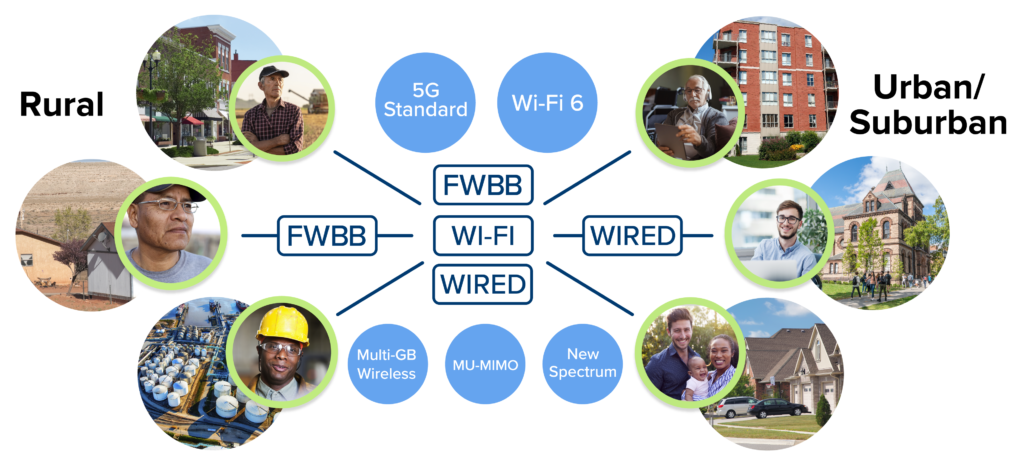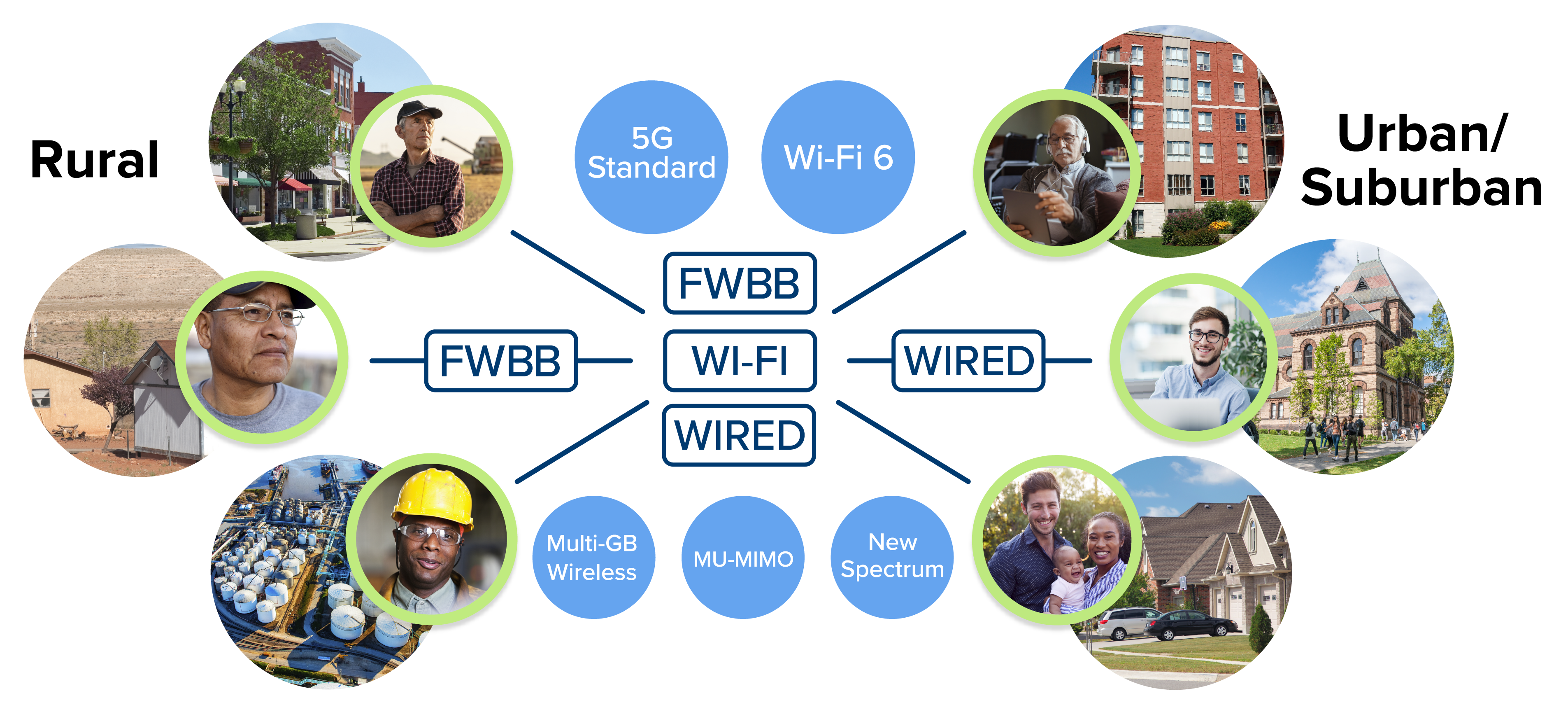The outcome is what matters most. Measured business value must be the prime initiative when considering transformation. New technology alone is not enough whether it’s being able to:
- Pick and pack an item at top speed
- Achieving the highest levels of quality in manufacturing
- Quality of life for the elderly or patient monitoring
- Or creating safe and secure environments
All of these processes have unique connectivity requirements – not just at the connected device but all the way back to the application that drives that device, which is often in the cloud. There are three key forces behind purpose-built networks:
Standards:
Standards reduce the cost of the foundational technology. A deep understanding of the standards and how networks operate enables the development of algorithms and MU-MIMO architectures which can achieve best-in-class spectral efficiency at an exceptionally low cost. The emergence of these standards also makes it easier to mix and match technologies such that best-in-class performance and cost can be achieved at every link in the network using a heterogenous portfolio of technologies.
Intelligence:
We now have access to massive amounts of detailed data (such as Lidar data) which we can use to plan networks, predict and diagnose issues and optimize performance. The challenge is to develop software to make it easy to take advantage of all this data during the entire network lifecycle while also using the same data to get the maximum amount of throughput from increasingly precious spectrum.
Of course, intelligence is not just in the software. Network operators will always come across unique situations that require access to experts for problem solving. That’s why, in this era of automation, we know that access to qualified experts in real time, 24/7 and across the globe will never go away.
Applications:
Every industry has its unique requirements. The third pillar of our vision is the continued growth of industry-specific solutions integrated with the network. As advanced APIs become easier to use and access, we expect to see more and more industry-specific applications become available. Additionally, networks will adapt appropriately to match the needs of the specific application in real time.

Successful digital transformation projects are technology agnostic. The preferred technology is the one that meets the performance specification with the highest reliability at the lowest total cost. Anything less is a compromise.
